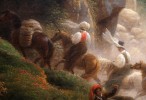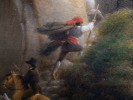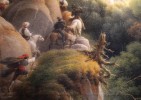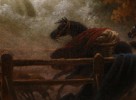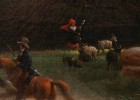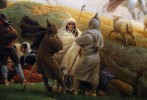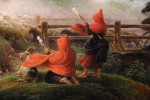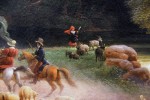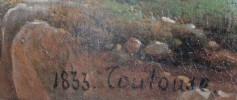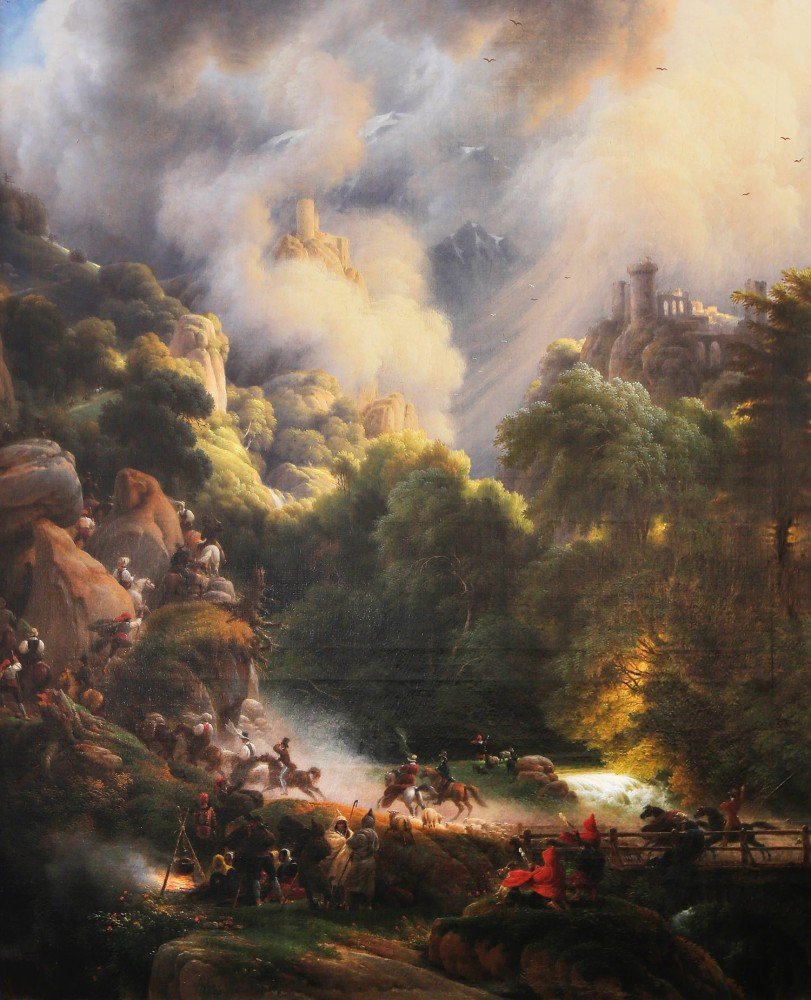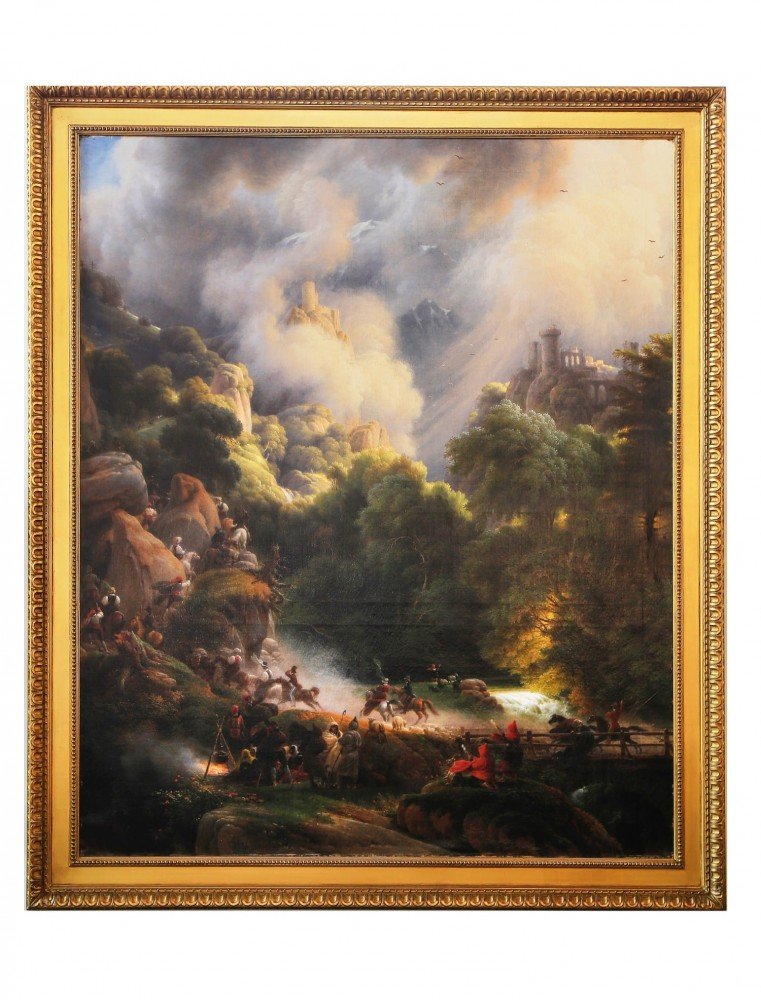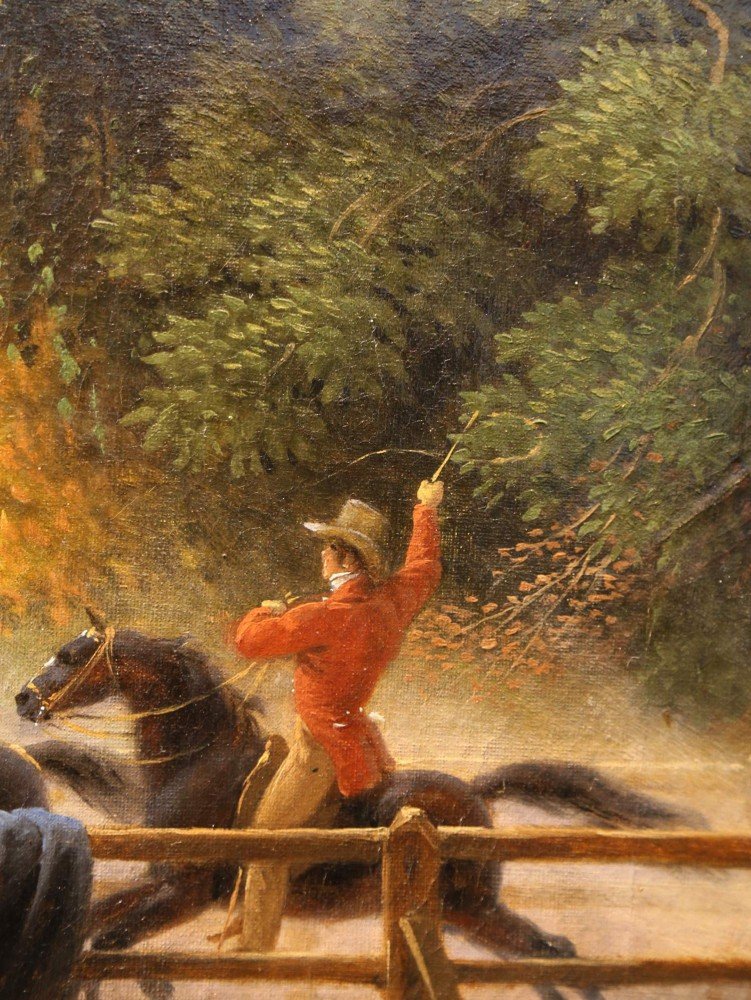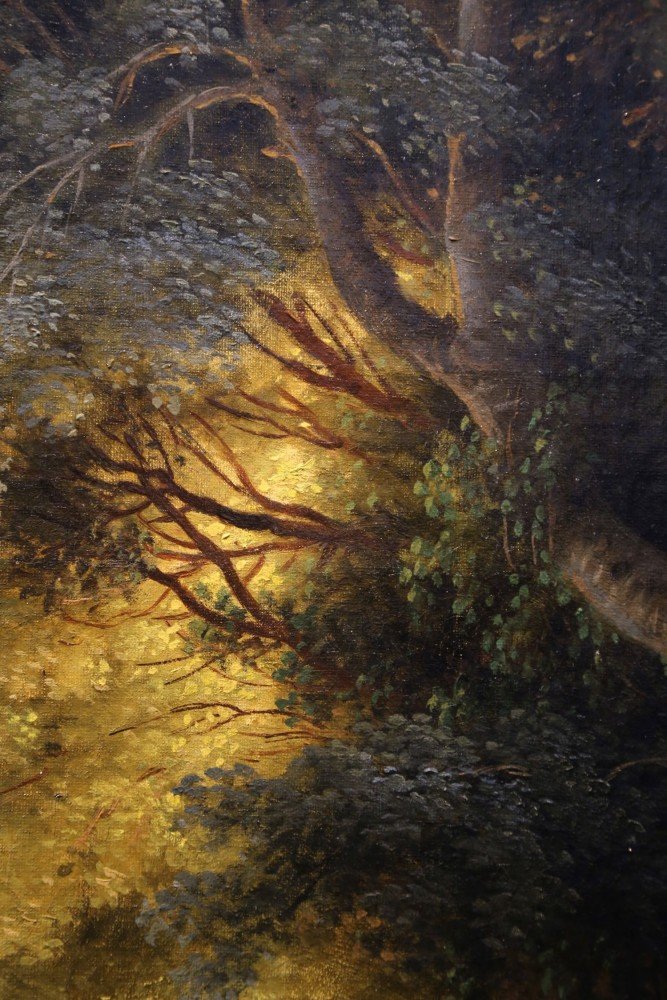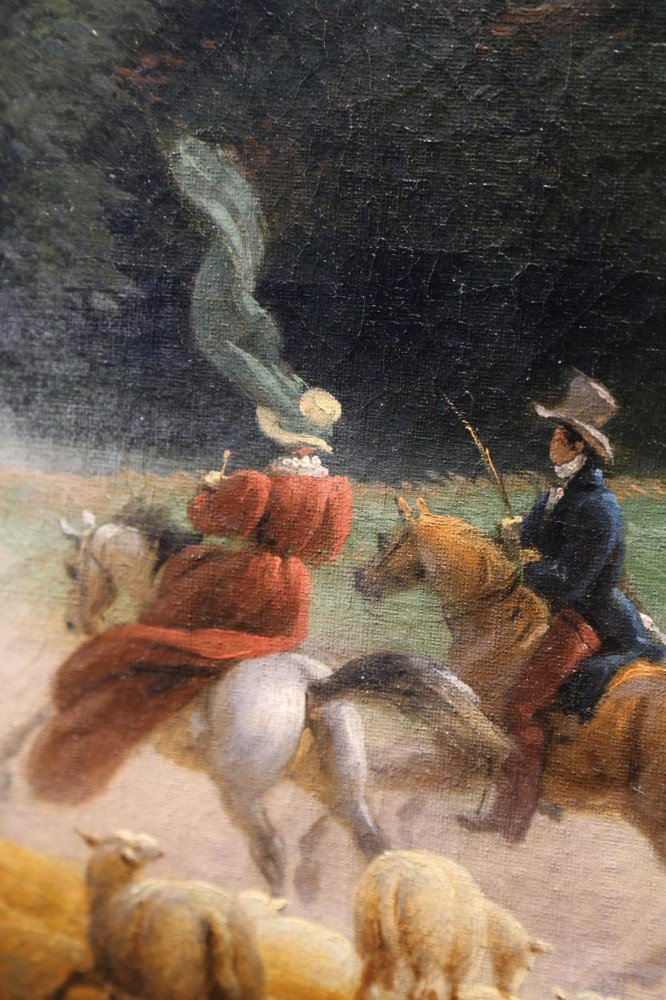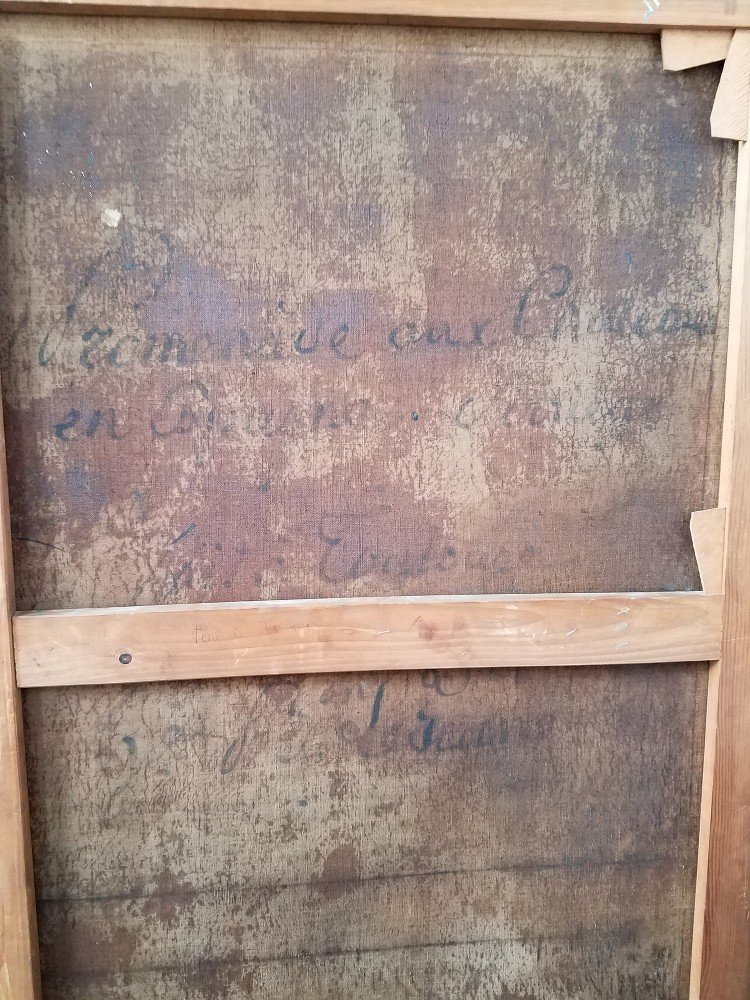Artist: Louis François Baron Lejeune (French, 1775–1848)
Medium: Oil on canvas
Signature: Inscribed Toulouse and dated 1833 and titled verso
Dimensions:
71 in. h. x 60 in. w., canvas
81 in. h. x 70 in. w., as framed
Description:
Titled and signed verso:
Promenade aux Chateaux de Crac, vers les Sources de la Garonne
Fait aux Toulouse
F. B(aron) Lejeune
Exhibited: Paris Salon of 1835, possibly #187.
Explication des Ouvrages de Peinture, Sculpture, Architecture, Gravure et Lithographie des Artistes Vivans, Paris, Musee Royal, March 1835, #1341
This monumental, light-filled 19thc. Romantic period landscape depicts tourists on an excursion to the medieval chateau de Crac near the sources of the Garonne river in the Pyrenees Mountain region which became popular with young British and European tourists in the 19thc for its spas and thermal baths, picturesque ruined 15th century castles, and for the way that the topography of the region dovetailed the aesthetics of the period in the desire for the sublime, the beautiful and the picturesque. In a reaction to the Industrial Revolution and modern life, the return to nature was celebrated for its virtue producing activities including exercise in the outdoors which promoted respiratory health and good health in general, as well as providing spiritual and moral benefits.
In the painting we see the immensity of nature in the towering mountains and the smallness of man. A group of tourists on horseback including women riding sidesaddle ascend the perilous winding path up the mountain on a windy, sun streaked day. In the foreground a troop of gypsy shepherds represent the agrarian past, and provide a contrast to the tourists dressed in clothes more reminiscent of city life.
Francois Baron Lejeune is best known for his paintings of Napoleonic War battle scenes observed and fought in first hand, as he was a long serving soldier, aide-de-camp to Napoleon's right hand man and eventually a general and commander in the French armies. In his distinguished twenty year military career he survived many battles and severe wounds, receiving numerous honors and having his name inscribed on L'Arc de Triomphe. In 1831 he retired from military service and settled in Toulouse, the site of the present picture. In his retirement he returned to landscape painting, always a passion for him, as he excelled in his ability to depict the monumentality of nature, the towering mountains of the Pyrenees and the effects of the sun on the landscape, trees and water. One can sense his delight in painting the fashionably dressed 'grand tourists,' ascending the narrow mountain path, with elements of their clothing buffeting in the heavy wind.
In 1837 he was the director of the Ecole des Beaux Arts in Toulouse and in 1841 he became Mayor of the city.



